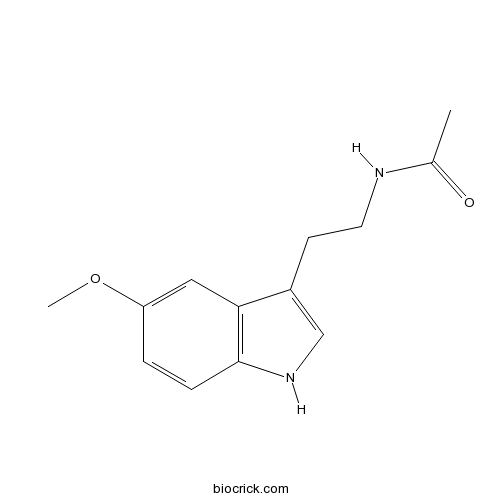Cerasus pseudocerasus
Cerasus pseudocerasus
1. The products in our compound library are selected from thousands of unique natural products; 2. It has the characteristics of diverse structure, diverse sources and wide coverage of activities; 3. Provide information on the activity of products from major journals, patents and research reports around the world, providing theoretical direction and research basis for further research and screening; 4. Free combination according to the type, source, target and disease of natural product; 5. The compound powder is placed in a covered tube and then discharged into a 10 x 10 cryostat; 6. Transport in ice pack or dry ice pack. Please store it at -20 °C as soon as possible after receiving the product, and use it as soon as possible after opening.
Natural products/compounds from Cerasus pseudocerasus
- Cat.No. Product Name CAS Number COA
-
BCN2196
Melatonin73-31-4
Instructions

[Chloroplast DNA trnQ-rps16 variation and genetic structure of nine wild Chinese cherry (Cerasus pseudocerasus Lindl.) populations].[Pubmed: 23208145]
Chinese cherry (Cerasus pseudocerasus Lindl.) is one of the most economically domestic fruit trees in China. The rich variation of wild Chinese cherry is the most important breeding resource for existing cultivars. In order to reveal the levels and distribution of genetic variation within wild Chinese cherry of Sichuan Province, China, where is rich in wild Chinese cherry, the sequence variation of chloroplast DNA trnQ-rps16 intergenic spacer was analyzed in 145 individuals of all nine existing populations (seven from Sichuan, two from Shanxi and Guizhou provinces) of China. The results showed that trnQ-rps16 sequence were aligned with 13 polymorphic sites (1.87%), including 3 substitutions and 10 indels in 145 individuals, which revealed a low level of genetic diversity (h= 0.562, π= 0.00184). Compared to other regions (h= 0.733, π= 0.00243), a rather lower genetic diversity (h= 0.544, π= 0.00203) was found in the populations from Sichuan, and a large scale of genetic diversity among the seven populations was detected (h= 0-0.708; π= 0-0.00298), ranging from EM (h=0.000, π=0.000) to TL (h=0.708, π=0.00298). The low genetic diversity of populations may be strongly affected by founder effect and bottleneck effect because of the marginal nature, recent reduction, and consequent genetic drift of these populations. In addition, a fairly low genetic differentiation (FST= 0.21573) was found among the studied populations. This suggest that gene flow seems to originate from pronounced seed dispersal abilities of the species and it may play a significant role in shaping such a genetic structure. The long generation cycle of the species may also contribute to this structure. Based on these findings, a conservational plan for sampling or preserving fewer populations but more individuals from each population for the species was proposed.


